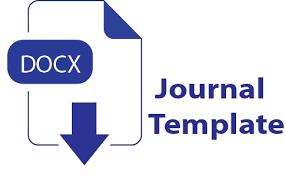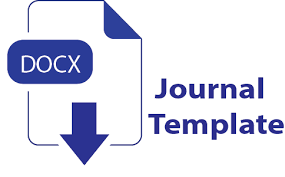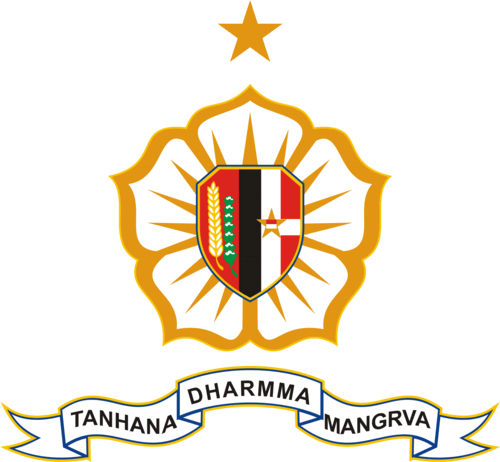Author Guidelines
Author Guidelines
Proceeding Jakarta Geopolitical Forum
Published by Lemhannas RI
Manuscript Preparation and Submission
Article Title
-
Maximum length: 16 words
-
Capitalise only the first word and proper nouns
Author Information
-
Full names without academic or professional titles (e.g., Dr., Prof.)
-
Full institutional affiliations, including department, study programme, and institution name
-
Corresponding author must be clearly indicated with a valid email address
Abstract
-
Written in clear, formal British English
-
Font: Arial, size 12, fully justified
-
Length: 150–200 words, single paragraph
-
Must concisely cover:
-
Research purpose (problem, objectives, originality)
-
Methodology summary
-
Key findings
-
Originality and practical or theoretical significance
-
Keywords
-
Provide 3–5 keywords, separated by semicolons (;)
Introduction
-
Provide a clear, focused overview of the research topic aligned with JGF’s thematic scope
-
Critically review recent and relevant literature (preferably within the last 10 years) to establish context
-
Identify research gaps or unresolved issues motivating the study
-
Clearly state the research problem and objectives
-
Define the study context and unit of analysis
-
Conclude with an outline of the article’s structure
-
Use formal academic British English, avoiding lengthy literature summaries
Literature Review
-
Written in Arial 12pt, formal British English
-
Present a structured discussion covering:
-
Theoretical foundations (key concepts, frameworks, Grand Theory)
-
Empirical studies relevant to the research question
-
-
Identify key findings, methodologies, and gaps in prior research
-
Formulate research hypotheses connected to theory and evidence
-
Include numbered and captioned tables and figures with sources
Methodology
-
Describe research design, methods, instruments, and data analysis procedures in sufficient detail to enable replication
-
Specify population/sample characteristics and materials used
-
For qualitative studies, detail researcher involvement, participant profiles, data sources, and analytic approach
-
State research setting, duration, and procedures to ensure credibility and validity
-
Write in coherent paragraphs without bullet points or lists
-
Use Arial font, size 12, formal British English
Results and Discussion
-
Present results clearly and succinctly in Arial 12pt
-
Use tables and figures to complement text, avoiding redundancy
-
Tables and figures must be centred, numbered sequentially, titled, and referenced in the text
-
Provide concise explanatory paragraphs for visual elements
-
Discuss results in relation to research objectives and prior studies
-
Highlight consistencies, contradictions, and contributions to the field
-
Support all claims with evidence from reputable indexed journals (Scopus, Web of Science, Sinta, DOAJ, etc.)
-
Avoid excessive citations and refrain from repeating results verbatim
Conclusion
-
Two well-structured paragraphs in Arial 12pt
-
Paragraph 1: Summarise principal findings aligned with research aims, using numbered points if multiple conclusions
-
Paragraph 2: Discuss implications, practical recommendations, and directions for future research including potential policy or developmental applications
Acknowledgments
-
Briefly acknowledge contributions from individuals, organisations, or funding bodies not qualifying for authorship
-
Font size: Arial 8pt, placed immediately after the conclusion
-
Example:
“We gratefully acknowledge the support of XXXX through the 20XX Research Grant. Our thanks also extend to Lembaga Ketahanan Nasional Republik Indonesia for their invaluable assistance throughout this study.”
References
-
Follow Vancouver style with numerical in-text citations in square brackets [1]
-
At least 80% of references must be from peer-reviewed national or international journals
-
Preferably include sources published within the last 10 years
-
Avoid excessive self-citations
-
Use citation management tools (Mendeley, Zotero, EndNote) for consistency and formatting accuracy
-
Manuscripts must have a similarity index below 25% as checked by Turnitin, iThenticate, or equivalent tools
-
Only list cited references; exclude uncited works
-
Recommended to cite Jurnal Lemhannas RI and other reputable national resilience publications
Sample References
-
Daihani DU. Mapping Regional Characteristics of National Resilience Through Data Mining Approaches. Jurnal Lemhannas RI. 2024;12(1):81–90. https://doi.org/10.55960/jlri.v12i1.564
-
Kementerian Koordinator Bidang Kemaritiman dan Investasi. Jakarta Geopolitical Forum 2024: Menko Luhut Tekankan Kolaborasi Internasional untuk Keamanan Maritim [Internet]. 2024 [cited 2025 May 30]. Available from: http://www.maritim.go.id/detail/jakarta-geopolitical-forum-2024-menko-luhut-tekankan-kolaborasi-internasional-untuk-keamanan-maritim
-
Kot S. Development insights on supply chain management in small and medium-sized enterprises. Berlin: Logos Verlag; 2023. https://books.google.co.id/books?id=qifPEAAAQBAJ
Citation Format for JGF Proceedings
Author(s) (Year). Title of article. Proceeding Lemhannas RI, pages XXX–XXX. https://doi.org/10.XXXX/JGF.vXXXXXX











